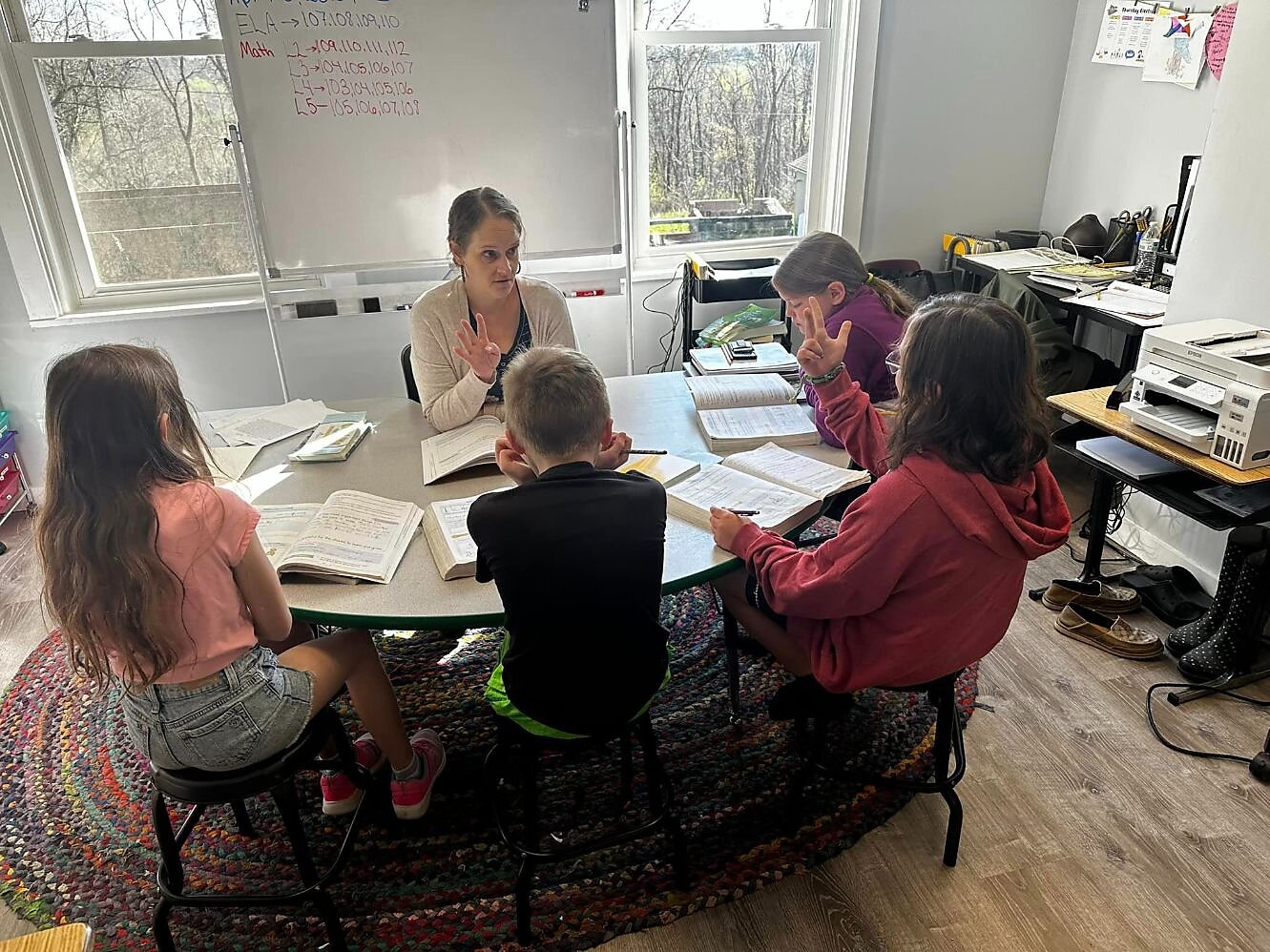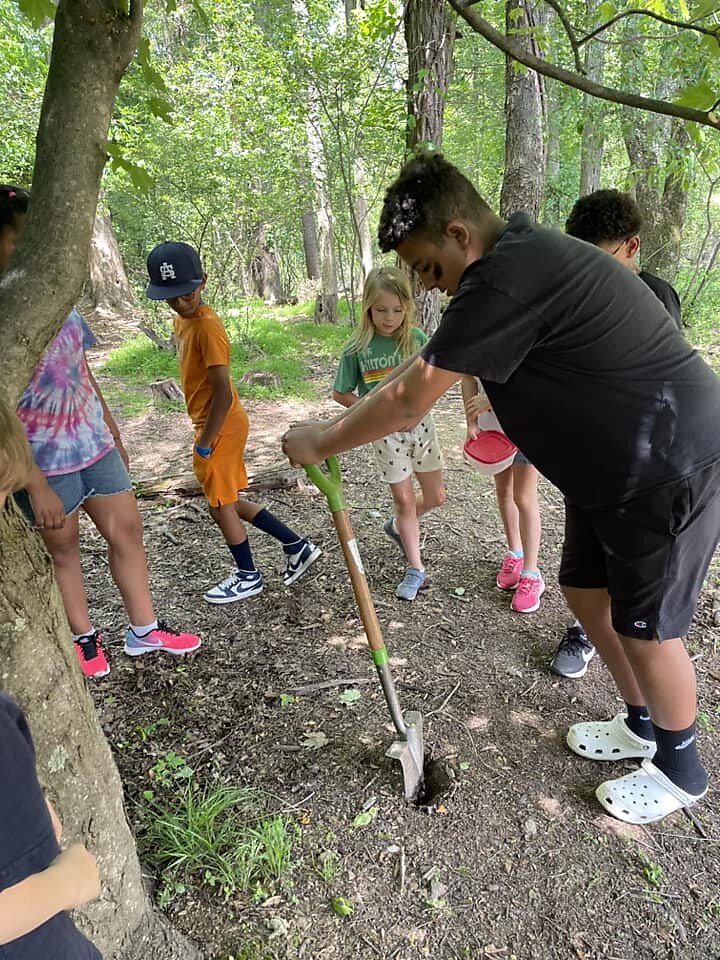Genevieve Peterson’s own struggles in school have long inspired her. It wasn’t until she was in high school that she was diagnosed as “twice exceptional,” gifted and dyslexic. That made a world of difference because she was given tools and accommodations that allowed her to succeed in a rigorous honors program and go to college and graduate school. She told her mom at the time of her diagnosis, “Someday I am going to make a school that meets the students’ educational needs. I’m going to create something different that allows students like me to succeed.”
That thought stuck with her. “I kept talking about that all the way through my undergraduate, my graduate school training, and as my career started. It was always in my mind,” she recalls. “I had a lot of key players along the line that kept giving me little sprinkles of wisdom, little pieces to the puzzle.”
After her third child was born, she found a book called Rethinking School by Susan Wise Bauer. “That’s the first time I had ever heard about a hybrid between a home school and private school,” she says. Her oldest was in preschool at the time, and she had started to see some signs that he might learn the same way she learned. So she was already looking for alternatives to public school for her kids.
“I started brainstorming. I’m pretty sure my husband thought I was nuts during that time period because he’d come home and I had our bedroom wall plastered with poster papers with ideas and thoughts,” Genevieve says. “It was during that time I created A One-Room Schoolhouse.”
She recruited friends to be on the board, and they launched the program publicly at the beginning of 2020. “We had our first parent information meeting in February of 2020. We had a lot of interest—a lot of people showed up—but no one signed on,” Genevieve says. Then COVID-19 shut down schools, including her son’s preschool, so she decided to just start homeschooling using her plans for A One-Room Schoolhouse. She and the other board members turned her basement rec room into a classroom and formed their own pandemic pod.
“Pretty much all interest ground to a halt,” she says. “Until people really got the full picture of what pandemic public schooling was going to look like.” In her area, access to the internet is spotty, so initially school buses drove around, and the drivers threw packets of work onto everyone’s driveways. Later they would go around and pick up the completed packets. “They got a better system going after some time, but to say that was not well received by some would be an understatement,” Genevieve adds.
She started hearing about people who were interested in homeschooling but didn’t know how to do it. So she decided to host “Homeschool 101” sessions in her basement classroom. She purposely didn’t talk about A One-Room Schoolhouse in the homeschooling sessions, but parents started asking her about it. She ended up filled to capacity that first year because so many parents were looking for another option. The next year, they doubled in size and moved out of Genevieve’s basement. They opened two satellite campuses the following year. Seeing their success, they added another campus this past year along with additional classrooms at one campus. This fall will mark the fifth year of A One-Room Schoolhouse.
Classes were offered five days a week during the initial year, but she found parents didn’t really want that schedule. They’ve settled on a hybrid program—three days a week at A One-Room Schoolhouse and students work at home the other days. Tuesdays and Wednesdays focus on language arts, math, science, and social studies. Thursdays are for electives, which are multi-age and include music, art, and nature studies.
A One-Room Schoolhouse follows a curriculum called The Good and the Beautiful, which is laid out in a way that makes it easy for parents to pick up at home where they leave off in school. The curriculum is nondenominational Christian and incorporates a lot of Charlotte Mason elements. Genevieve breaks the day up to ensure the kids get a lot of time outdoors and in free play.
Genevieve’s financial policy is for the tuition, which is just $2,000 a year, to cover all basic expenses—rent, salaries, insurance, etc. For extras, they hold a gala every year. “The gala funds our expansion efforts and our scholarship program because we never want someone to not come because of money. That has been fundamental from the beginning,” she says. “Our scholarship program can help families out when the $2,000 a year is too much. I know with four children, $2,000 a year equals $8,000 a year. So our scholarships are really helpful.”
A One-Room Schoolhouse follows its own calendar, running from Labor Day to Memorial Day for classes. Since they are located in Pennsylvania, homeschoolers must have a portfolio review each year and turn in a certification to their local school district. Genevieve combines parent-teacher conferences and portfolio reviews the week after Memorial Day to simplify things for parents. “They can sign up for their classes for next year, review their portfolios, and get some feedback on what teachers are seeing. Then we put our heads together with the parents to plan what the next steps are because our model is very much a collaborative process,” she explains.
“I started A One-Room Schoolhouse because I was just dissatisfied with the options I had available, and I wanted a different choice,” says Genevieve. “It’s not that the other choices were bad, it’s that they weren’t a good fit for my family.”


